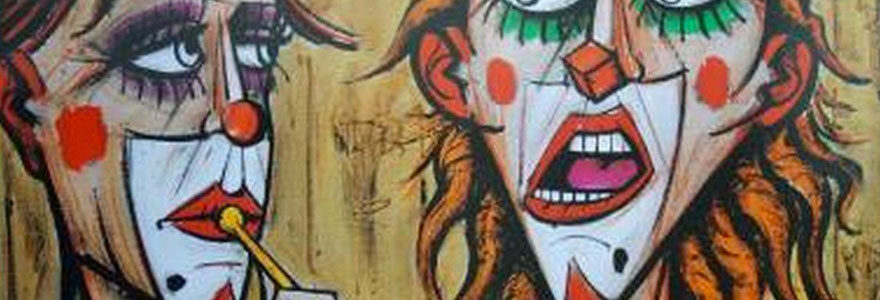Buffet was mostly acclaimed for his figurative work.Bernard Buffet original lithographs, oil on canvas paintings, and mixed-media drawings are all on display at the Galerie Estades. To view, sell and buy Bernard Buffet paintings today, visit estades.com.
Bernard Buffet
The compositions of Buffet's paintings tend to be realistic, graphic, and centrally located.
War horrors, landscapes and mythology were only a few of the subjects Buffet explored in his paintings.
Clowns were a representation of his bizarre universe, gloomy and tragic inner thoughts, and the thoughts of others.
Buffet was a great painter since he created an incredible amount of works, more than 8,000 in all. Still lifes, clowns, religious settings, and more. Art collectors and admirers throughout the globe continue to value Buffet because of his prolific creative output.
Exhibitions devoted to the great painter usually attract enormous audiences in France because of the public's intense desire for him.
Why did Bernard Buffet paint clowns?
Here are some explored reasons why Buffet painted clowns;
1.As a way to communicate his feelings and those of others
Portraits of clowns' faces were among Buffet's favourite topics. His international fame was greatly aided by these paintings, especially the sad clowns. A self-portrait by Buffet was shown as a clown in his works.
Expressions of his inner difficulties, tragedies and existential dilemmas that have shaped his existence. His clown paintings reveal, accentuate, and exaggerate the human inner condition.
2.To capture the essence of French society in the post-war era
The popularity of his clowns was greatly aided by his ability to convey the mood of postwar French society. Its rugged, arid lines seem like they've been handed down through the ages from generation to generation. In the face of his existentialist grief, the painter's clowns stand testimony.
The journal Connaissance des Arts, which identified the ten finest post-war painters in 1955, gave him the first prize. As a result of his youth, reliability, and ability to understand postwar reality, he was an enormous success.
This artist's haunting Horror of War series, which depicts the soulless, angular characters who populate his villages and cities, is one of his most acclaimed creations.
3.To depict religious beliefs and myths
His work includes still-lifes, lithography, engravings, sculpting and religious themes such as The Passion of Christ, 1952.
Each year at the Garnier, Buffet put on a series of themed performances that examined various aspects of literacy, symbolism, politics , art history, religion, and more.
The artistic output of Buffet is popular in Japan.
Throughout his lifetime, he was the very first foreign artist to have a museum dedicated to him.
He won his first trophy in an election of the country's best painters, sponsored in 1955, by the Connaissance des arts media.
Bernard Buffet gallery
One of the greatest artists of the 20th century, Buffet had a wide range of skills. Each Bernard Buffet lithograph has the brilliance stamp of this multi-talented, lithographer, engraver, and artist.
There were several worldwide exhibits and awards bestowed upon him throughout his lifetime; among them was his 1974 election to the Académie des Beaux-Arts. Buffet’s art may be found in several public collections, such as;
• The National Museum of Modern Art in Paris
• National Museum of Western Art, Tokyo
• Lastly, a museum in Japan is dedicated to his work
